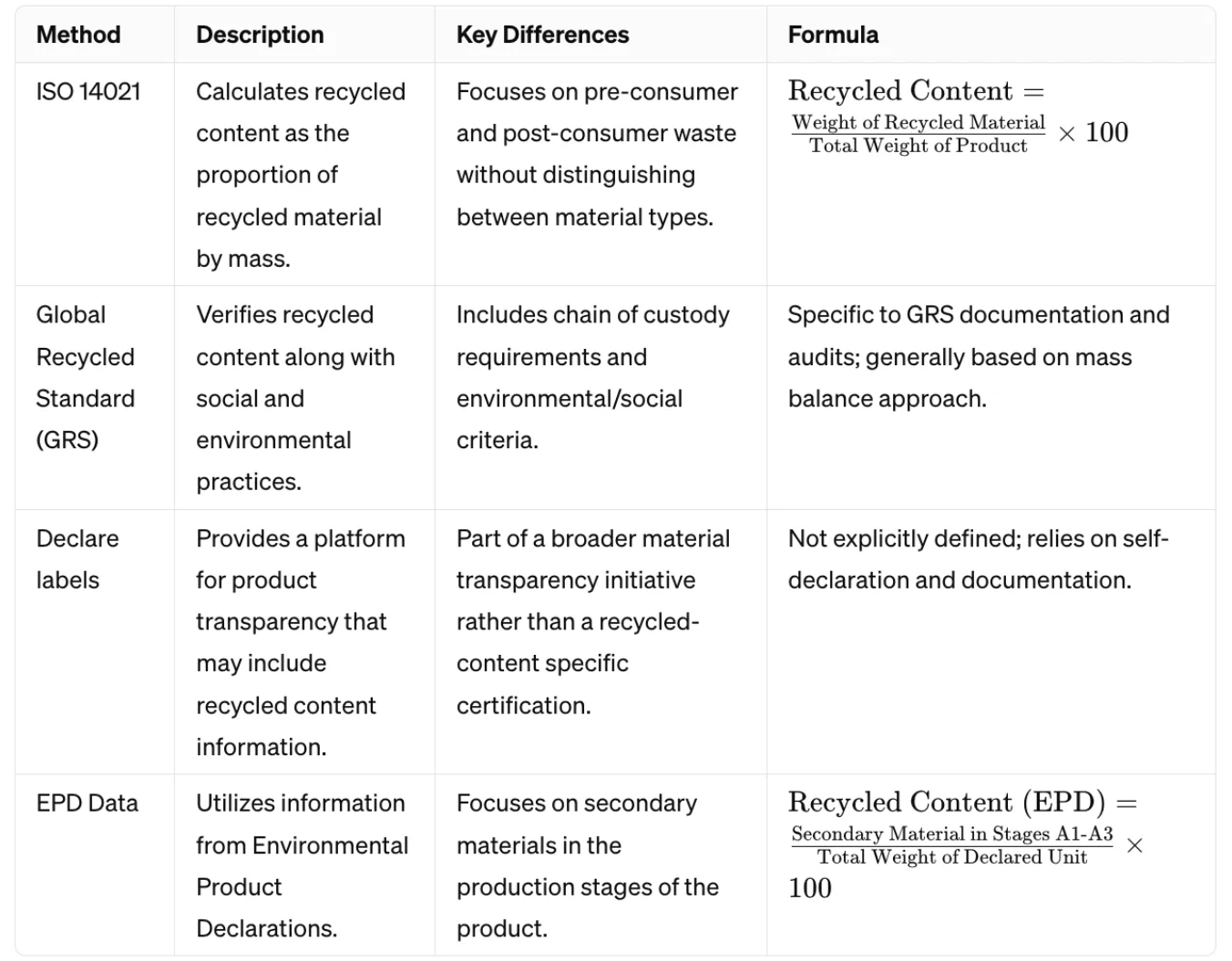The ultimate guide to leveraging recycled content metrics for building material circularity


· 7 min read
In the ever-evolving landscape of sustainable construction, the emphasis on circularity and resource efficiency has never been more critical. As the industry strides towards greener practices, understanding and utilizing “recycled content” metrics emerges as a cornerstone strategy.
This guide delves into the essence of recycled content, its calculation, and its pivotal role in promoting circularity within building materials, offering invaluable insights for architects, builders, and sustainability advocates aiming to make a tangible difference in 2024.
Recycled content represents the fraction of materials in a product derived from recycled sources, as opposed to newly extracted resources. These materials, sourced from both pre-consumer and post-consumer waste, stand at the forefront of reducing the construction industry’s environmental footprint.
The International Organization for Standardization (ISO) provides a specific definition of recycled content under ISO 14021, “Environmental labels and declarations — Self-declared environmental claims (Type II environmental labelling).” According to ISO 14021:
The standard does not provide a formula per se but outlines the method for calculating the proportion of recycled content by mass.
Calculating recycled content from Environmental Product Declarations (EPD) data offers a precise and standardized method to assess the sustainability attributes of materials and products.
This approach hinges considering the amount of secondary materials within the life cycle stages A1-A3 (cradle-to-gate), versus the total mass of the product.
By extracting the quantity of secondary (recycled) materials used during these stages and comparing it to the total weight of the declared unit, one can derive the percentage of recycled content.
Recycled Content (%) = (Secondary Material, A1–A3) / (Weight of Declared Unit) × 100
This calculation provides a clear, objective measure of the product’s use of recycled materials. Such quantification is invaluable for sustainability assessments, offering a concrete basis for comparing products, informing sustainable design choices, and communicating environmental credentials to consumers and stakeholders.
However, it’s important to note that this method’s accuracy depends on the quality of the data reported in each EPD, and based on our experience does have pitfalls sometimes (with recycled-content shown as >100%).
Several labels and organisations assess and certify the recycled content of products:
The calculation of recycled content can vary based on the standard or certification in question, but it generally involves determining the mass of recycled materials in a product and expressing it as a percentage of the total mass of all materials in the product.

This article is also published on the author's blog. illuminem Voices is a democratic space presenting the thoughts and opinions of leading Sustainability & Energy writers, their opinions do not necessarily represent those of illuminem.
illuminem

Construction Tech · Green Tech
Minn Tun

Waste management · Recycling
Damien Sanjuan

ESG · Corporate Sustainability
Bangkok Post

Solar · Recycling
earth.com

Recycling · Green Tech
Deutsche Welle

Recycling · Manufacturing